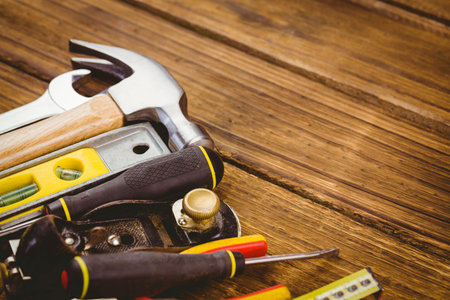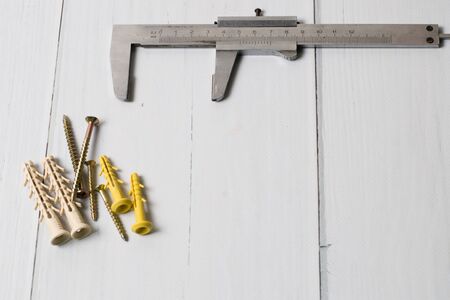1. Understanding the Importance of Home Staging
When it comes to selling your home, first impressions matter more than you might think. Home staging is the process of preparing and presenting a property in the best possible light to attract potential buyers. It’s not just about decorating—it’s about helping buyers see themselves living in the space. In today’s competitive real estate market, effective staging can make a big difference in how quickly your home sells and for how much.
Why Home Staging Matters
Home staging is all about creating an emotional connection. Buyers often make up their minds within minutes of walking into a home. A clean, well-staged home helps them imagine their own furniture in the rooms, their family gathered around the dining table, or relaxing in the living room. If your house feels welcoming and move-in ready, buyers are more likely to put in an offer—and at a better price.
The Impact on Buyer Perception
Most buyers start their search online, scrolling through photos before ever stepping foot into a property. A staged home stands out in listings with bright, appealing images that draw attention. In person, staging helps highlight the home’s strengths and minimize any flaws. For example:
| Unstaged Room | Staged Room |
|---|---|
| Cluttered with personal items | Neutral decor with minimal distractions |
| Furniture layout may feel awkward | Strategic placement to maximize space |
| Lacks warmth or personality | Inviting atmosphere with cozy touches |
The Financial Benefits of Home Staging
According to industry reports, staged homes tend to sell faster and for higher prices compared to non-staged properties. Here are some key benefits:
- Faster Sale: Homes that are staged typically spend less time on the market.
- Higher Offers: Buyers are often willing to pay more when they feel emotionally connected to a home.
- Competitive Edge: In a crowded market, staging sets your listing apart from others.
Real Estate Stats That Support Staging
A study by the National Association of Realtors (NAR) found that:
- 82% of buyer’s agents said staging made it easier for clients to visualize a property as their future home.
- 23% of seller’s agents reported that staging increased the dollar value offered between 1%–5% compared to similar homes.
It’s More Than Just Looks—It’s Strategy
Home staging isn’t just about making a house look pretty—it’s a strategic marketing tool. By showcasing the best features of your home and allowing buyers to mentally move in, you’re setting yourself up for a successful sale. Whether youre working with a professional stager or doing it yourself, understanding its importance is the first step toward getting your home sold quickly and profitably.
2. Decluttering and Depersonalizing Your Space
When it comes to home staging, one of the most important steps is decluttering and depersonalizing your space. This helps create a clean, neutral environment that allows potential buyers to imagine themselves living in your home. Too many personal items or an overload of belongings can distract buyers and make rooms feel smaller than they really are.
Why Decluttering Matters
Clutter can make even a spacious room feel cramped and chaotic. By removing excess items, you not only open up the space visually but also highlight the homes features—like beautiful flooring, natural light, or built-in storage. A clutter-free space feels more inviting and easier for buyers to connect with emotionally.
Common Areas to Declutter
| Area | What to Remove |
|---|---|
| Living Room | Excess furniture, magazines, personal photos, remote controls |
| Kitchen | Small appliances, fridge magnets, dish racks, excess utensils |
| Bedrooms | Toys, laundry baskets, extra pillows, personal collections |
| Bathrooms | Personal care products, used towels, bath toys |
| Closets | Out-of-season clothes, cluttered shelves, overflowing shoe racks |
The Importance of Depersonalizing
Depersonalizing means removing items that reflect your personality so buyers can better imagine their own life in the home. This includes family photos, unique artwork, religious symbols, and bold color choices. The goal is to appeal to a broad audience by keeping decor neutral and universally appealing.
Tips for Depersonalizing Effectively
- Take down family portraits and replace them with simple landscape art.
- Remove diplomas, trophies, or hobby displays.
- If walls are painted in bright or unusual colors, consider repainting them in soft neutrals like beige, gray, or warm white.
- Store away personalized bathroom items like monogrammed towels or custom soaps.
Pro Tip:
Create a “show-ready” box with personal or daily-use items you remove for staging but still need occasionally. Keep it handy so you can quickly hide these items before showings.
A clean and neutral home lets buyers focus on the property’s best features rather than its current occupants. By decluttering and depersonalizing each room thoughtfully, you’re helping potential buyers picture themselves right at home—and that’s a big step toward a successful sale.

3. Strategic Furniture Placement and Layout Optimization
When it comes to home staging, how you place your furniture can make a huge difference in how buyers feel about your space. The goal is to make every room look open, inviting, and functional. Strategic furniture placement helps show off the size of a room, creates better flow, and makes it easier for buyers to imagine living there.
Focus on Space and Flow
Buyers want rooms that feel spacious and easy to move through. Avoid overcrowding with too much furniture or pieces that are too large for the room. Instead, choose just enough key items to define each space without making it feel tight or cluttered.
Tips for Better Flow:
- Keep walkways clear—ideally 2.5 to 3 feet wide
- Avoid blocking windows and doors
- Arrange seating so it encourages conversation
- Use area rugs to define spaces in open floor plans
Highlight Room Functionality
Make sure each room clearly shows its purpose. A spare bedroom should look like a bedroom—not a storage closet or catch-all space. If you have an awkward nook or small corner, stage it as a reading area or mini office. This helps buyers see how they could use every part of the home.
Examples of Functional Room Staging:
| Room | Main Function | Staging Tip |
|---|---|---|
| Living Room | Relaxation & Entertaining | Create a cozy seating area with a sofa, coffee table, and accent chairs facing each other |
| Dining Room | Eating & Gathering | Add a dining table with 4-6 chairs, center it under a light fixture if possible |
| Main Bedroom | Sleeping & Resting | Add a bed with matching nightstands and lamps; keep décor simple and relaxing |
| Home Office Nook | Work from Home | Add a small desk and chair with minimal accessories; place near natural light if possible |
| Sitting Area/Loft | Coffee/Reading Spot | Add two chairs and a small table to create an inviting mini lounge space |
Avoid Common Furniture Mistakes
Poor layout choices can make even large rooms feel cramped or confusing. Here are some things to avoid:
- Pushing all furniture against the walls—floating pieces can create more natural conversation areas.
- Mismatched furniture styles that clash visually—stick with one cohesive look.
- Inefficient traffic flow—make sure theres an intuitive path through the room.
- Dated or overly personal items—go for neutral and updated designs that appeal to most buyers.
The Bottom Line: Let Buyers Imagine Themselves at Home
The right furniture layout helps buyers mentally “move in” before they even make an offer. It’s not just about looks—it’s about showing how livable and practical your home can be. With thoughtful staging, you can turn ordinary rooms into irresistible spaces that sell faster and for more money.
4. Enhancing Curb Appeal
When it comes to selling your home, first impressions matter—and they start before potential buyers even walk through the front door. Curb appeal plays a huge role in setting the tone for the rest of the showing. A well-maintained and inviting exterior can create excitement and build positive expectations. Here are some simple yet effective ways to boost your home’s curb appeal.
Landscaping That Makes an Impact
A neat and tidy yard signals that the home has been cared for. You don’t need a full garden makeover; just a few strategic updates can go a long way:
- Mow the lawn regularly: Keep grass trimmed and edges clean.
- Trim bushes and trees: Remove overgrowth and dead branches.
- Add color: Use seasonal flowers or potted plants near the entrance.
- Fresh mulch: Refreshing mulch in flower beds makes everything look crisp and new.
The Power of a Welcoming Front Door
Your front door is more than just an entry point—it’s a focal piece that can either invite or turn away interest. Consider these upgrades:
| Front Door Feature | Quick Fix |
|---|---|
| Door Paint | A fresh coat in a bold but classic color like navy blue or deep red |
| Hardware | Replace outdated knobs, locks, or knockers with modern finishes like brushed nickel or matte black |
| Lighting | Add stylish sconces or clean existing fixtures for better visibility and style |
| Welcome Mat | A clean, new mat adds charm and shows attention to detail |
Maintain the Exterior Like a Pro
The condition of your home’s exterior says a lot about how it’s been maintained overall. Here are some essential upkeep tasks that make a noticeable difference:
- Power wash surfaces: Clean siding, sidewalks, driveways, and porches to remove dirt and stains.
- Fix minor damages: Repair cracked steps, loose railings, or chipped paint.
- Tidy up outdoor items: Store hoses, garbage bins, and tools out of sight.
A Quick Curb Appeal Checklist
This easy checklist helps you stay on track when prepping your homes exterior:
- Lawn mowed and edged
- Trees/bushes trimmed
- Potted plants arranged neatly
- Main entry cleaned and painted if needed
5. Lighting, Color, and Decor Tips to Boost Buyer Interest
When it comes to staging your home for a successful sale, the right lighting, color palette, and decor choices can make all the difference. These elements help create a warm, inviting atmosphere that allows buyers to imagine themselves living in the space. Heres how you can use each of these tools effectively.
Let There Be Light
Lighting plays a huge role in how people feel when they walk into a room. A well-lit home feels clean, spacious, and welcoming. Use a mix of natural light and artificial light sources to brighten up each space.
Lighting Tips:
| Type | Tip |
|---|---|
| Natural Light | Open curtains and blinds during showings to let sunlight pour in. |
| Overhead Lighting | Replace outdated fixtures with modern, neutral styles that appeal to most buyers. |
| Lamps | Add table and floor lamps in darker corners to create cozy vibes. |
| Dimmers | If possible, install dimmers for flexibility in mood and brightness. |
The Power of Paint Colors
The colors on your walls can either attract or repel buyers. Neutral tones give your home a fresh, clean look while allowing buyers to envision their own style in the space.
Top Paint Colors for Home Staging:
| Room | Suggested Colors |
|---|---|
| Living Room | Soft beige, warm gray (greige), or creamy white |
| Kitchen | Crisp white or pale gray with subtle undertones |
| Bedrooms | Mist blue, soft taupe, or light sage green for a calming effect |
| Bathrooms | Pale blues or whites with cool undertones for a spa-like feel |
Selecting the Right Decor Accents
The right decor adds personality without overwhelming the space. Aim for minimalism with touches of warmth. Think cozy throws, fresh flowers, or simple wall art that complements your color scheme.
Dos and Donts of Staging Decor:
| Dos | Donts |
|---|---|
| Add greenery like potted plants or fresh flowers for life and color. | Avoid loud patterns or overly personal items like family portraits. |
| Create small vignettes with books, candles, and neutral accessories. | Avoid clutter—less is more when it comes to decor. |
| Select throw pillows and blankets in complementary tones. | Avoid trendy pieces that may not appeal to everyone. |
Create Flow and Consistency Throughout Your Home
Your lighting, color choices, and decor should all work together to tell one cohesive story. Keep things consistent from room to room so buyers feel a smooth transition as they walk through your home. The goal is to create an environment that feels modern yet comfortable—a place where anyone could see themselves living happily.
This attention to detail can significantly boost buyer interest and help your home sell faster—and possibly for more money. When done right, lighting, color, and decor are powerful tools in your home staging toolkit.
6. Professional Staging vs. DIY: What’s Right for You?
When it comes to home staging, one of the biggest decisions you’ll face is whether to hire a professional stager or take the do-it-yourself route. Both options have their advantages and challenges, and the right choice depends on your budget, time, and how hands-on you want to be in the selling process.
Pros and Cons
| Option | Pros | Cons |
|---|---|---|
| Professional Staging | – Expert design knowledge – Access to high-end furniture and decor – Objective perspective on your space – Increases perceived value of the home |
– Can be expensive – Less control over final look – May require moving out temporarily |
| DIY Staging | – Cost-effective – Full control over design choices – Allows for personal involvement |
– Time-consuming – May lack professional polish – Emotional attachment can cloud judgment |
Factors to Consider
Your Budget
If youre working with a tight budget, DIY staging might make more sense. You can declutter, rearrange furniture, and add small touches like fresh flowers or neutral-colored pillows without spending much. However, if your home needs more than just light staging—like renting modern furniture or repainting key rooms—a professional stager could offer better returns on investment.
Your Timeline
If you’re in a rush to list your home, hiring a pro can save you time. They know how to transform spaces quickly and efficiently. On the other hand, if you have a flexible timeline and enjoy home projects, doing it yourself can be rewarding and manageable.
Your Skillset and Objectivity
You may have great taste, but it can be hard to see your own home through a buyer’s eyes. Professionals bring an unbiased opinion and experience with what appeals to today’s market. If you’re unsure about styling trends or how to maximize space visually, working with a pro might be worth it.
Making the Right Choice for You
A good approach is to assess your homes current condition and ask yourself these questions:
- Does my home already look modern and clean?
- Do I have time to shop for accessories or rearrange furniture?
- Am I confident in creating inviting spaces that appeal to buyers?
If you answered “yes” to most of these, DIY could work well for you. But if not—or if youre aiming for top-dollar results—professional staging could be a smart investment.


